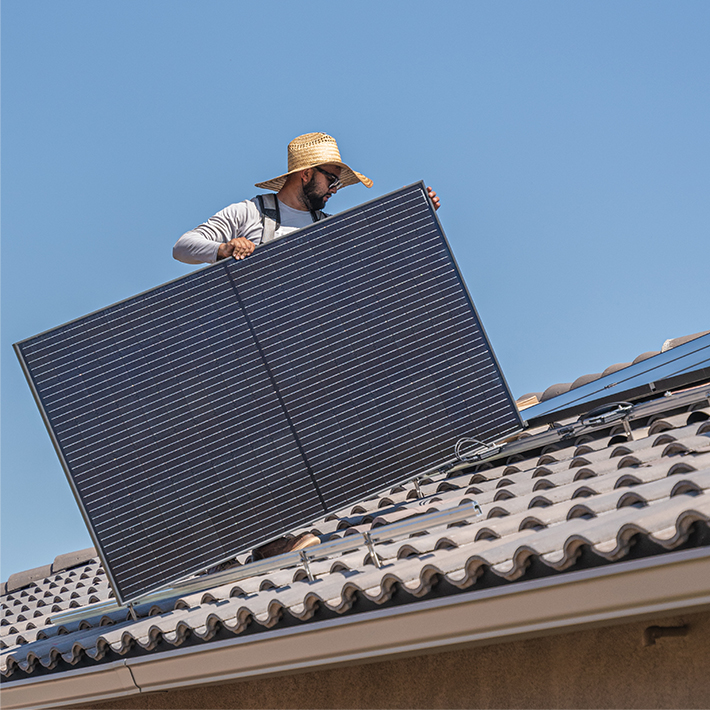Solar energy is better for the environment and saves you money on your electricity bill. At Solar Pros, we work hard to optimize the energy production of your system. It’s one of the reasons we are the best solar panel installer in Tucson. A key factor in system efficiency is solar panel placement, which we carefully plan for each installation.
This article gives an overview of the general best practices for system placement. Keep in mind that when we design a system for a home or business, we consider a variety of factors including available space, roof orientation, and the typical amount/time of energy use. This means that the specific placement varies between jobs in order to optimize every installation.
Solar Panel Tilt
In addition to the direction of the panels, we also optimize their tilt. For peak production, sunlight should hit at a perpendicular angle to the panel. The angle of the sun relative to the panels will change seasonally, so we take this into account when determining the best tilt.
Solar Panel Direction
In an ideal scenario, solar panels in the Northern Hemisphere produce the most energy when they face south. Above the Tropic of Cancer, which is at 23.4°N Latitude, the sun is in the southern half of the sky year-round. The entire continental United States is within this region.
In order for the panels to produce the most energy possible, they should face true south. This is different from magnetic south, which is the “south” shown on a compass.
When Should Solar Panels Not Face Due South?
If your utility company uses Time of Use (TOU) billing, orienting the panels slightly west of south may be beneficial. This is because they will produce more energy later in the day, which is when use will generally peak. South-facing panels, on the other hand, produce more energy overall but produce the most during midday when energy use is typically lower.
Tucson Electric Power (TEP) uses a net export plan, meaning they credit a set dollar amount per kilowatt-hour (kWh) that your system sends back to the energy grid. This is in contrast to net metering, which credits one kWh for each kWh sent back to the grid. Given this, we will review your recent electricity bills to come up with a plan to optimize solar panel placement for your needs.
What If You Don’t Have a South-Facing Roof?
Roof placement is the most common option for residential solar power systems. Some homes do not have a south-facing area for panels. In this case, the most common solution is to add more panels to ensure your system produces enough for your energy needs.
Depending on available space, installing a solar array on the ground may be an option. This does require a large area for installation.
Install Solar Panels for Your Home or Business
When you choose Solar Pros for your solar panel installation, you can trust that we will optimize placement and all other aspects of system design to maximize energy output. This helps you save money while using cleaner energy.




